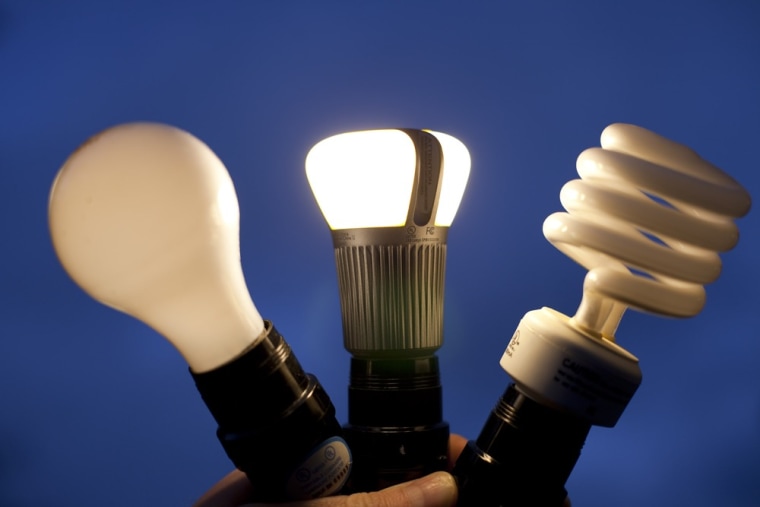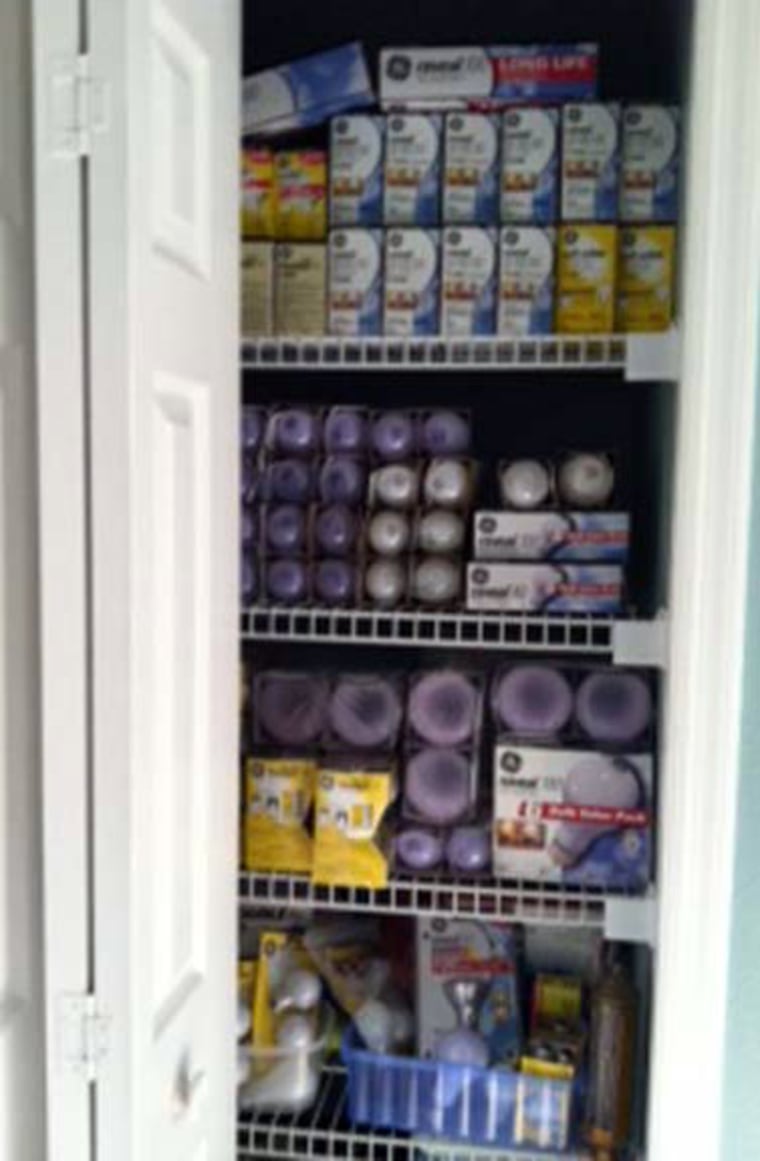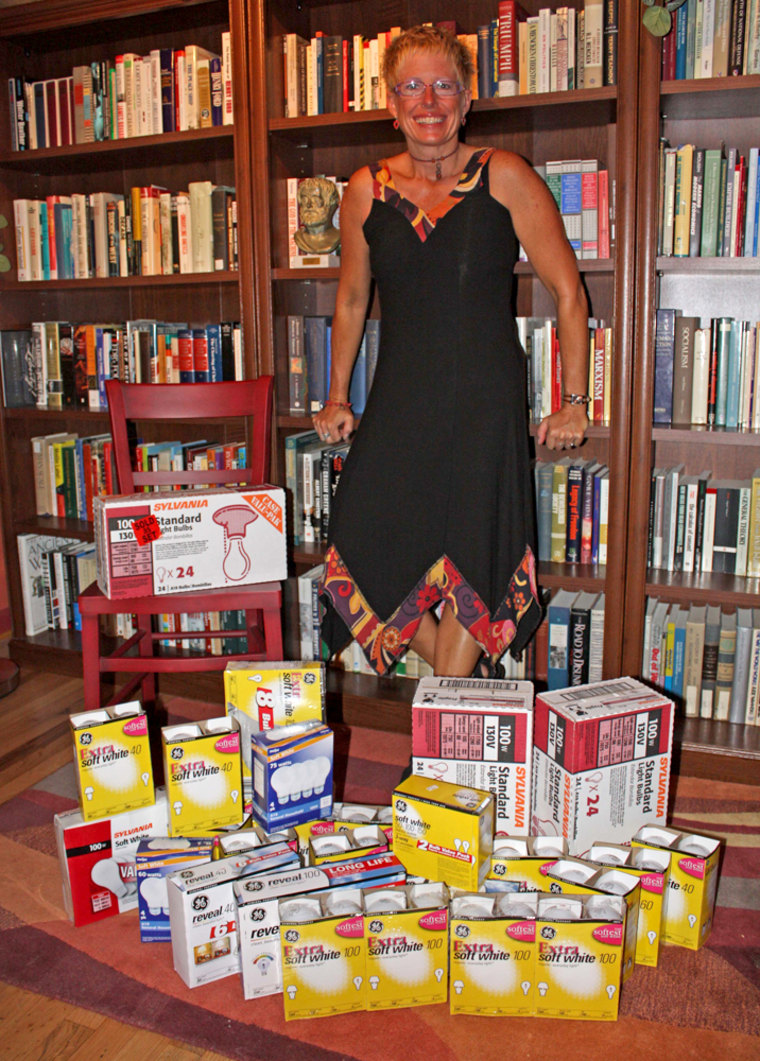Karen DeCoster is thinking of entering the lighting business.
DeCoster, a certified public accountant from Detroit, has no experience in the field, but after hoarding 100-watt incandescent bulbs for months, she’s hoping to sell them on Craigslist for a profit.
Starting in January, the traditional 100-watt incandescent bulbs that many Americans look to when lighting their homes will become a hot commodity. New federal efficiency standards, passed as part of the Energy Independence and Security Act of 2007, will make the production of these bulbs illegal then, followed by 75-, 60- and 40-watt bulbs in later years.
As the new standards gain publicity, concerned consumers, as well as members of the design community, are stocking up on the bulbs they’ve come to know and love. The new, more energy-efficient alternatives to the traditional incandescent bulbs — including halogen incandescent bulbs, compact fluorescents known as CFLs and LED bulbs — are considered by many to cast a harsh, overly bright glow or too weak of a light. Other complaints include their expense, while some medical experts say CFLs can exacerbate or trigger migraines.
“I despise fluorescents; it’s too bright of a light, too obnoxious,” DeCoster said in an interview with msnbc.com. “These edicts always come from the government. It’s an attack on civilization. It’s a condemnation on our standard of living.”
Act of rebellion
DeCoster has collected hundreds of bulbs in her basement, not only because she hates the alternative, but also because she considers it her “social obligation.” Hoarding bulbs is her form of peaceful rebellion against what she sees as an unconstitutional measure forcing Americans to change the way they have lived for decades.
Conservative news hosts Glenn Beck and Rush Limbaugh have come out swinging against the new efficiency standards, which were signed into law by President George W. Bush during his second term.
“Just like that, the Congress and the president banned incandescent light bulbs,” Limbaugh said on his radio show in January 2008. “Now, what this is, folks, is death by a thousand little cuts. This is how liberty dies.”

Light bulbs have even become a 2012 campaign issue. GOP presidential candidate Michele Bachmann has repeatedly spoken out against the new standards on campaign stops and supported a failed last-minute effort in the House to repeal the mandate for the more-efficient bulbs.
“I think Thomas Edison did a pretty patriotic thing for this country by inventing the light bulb,” Bachmann told a New Hampshire audience, according to Mother Jones. “And I think darn well, you New Hampshirites, if you want to buy Thomas Edison’s wonderful invention, you should be able to.”
Supporters of the new standards say the rules have been misrepresented.
“We are not banning incandescents,” Rep. John Dingell, D-Mich., who serves on the House Energy and Commerce Committee, told msnbc.com. “The bill in its amended form simply requires bulbs to be more efficient. It will save millions of barrels of oil every year. It will help with global warming. It will save the average American family $85 per year on electricity bills.”
CFL bulbs last about 10 times longer than traditional bulbs and cost consumers $1.20 a year in electricity costs, as compared to incandescents’ $4.80 a year, according to the Department of Energy.
Light bulb manufacturers have been quick to point out that incandescent bulbs, in their more energy-efficient halogen form, will still be available, as well as CFLs and LED bulbs.
Hoarding by design
But some members of the design community are spurning the alternatives and hoarding traditional bulbs for aesthetic reasons.
Melinda D., an interior designer from North Carolina, stocks up on incandescent bulbs to use with her clients.
“It’s for aesthetic reasons,” she said in an interview with msnbc.com. “Fluorescent bulbs do not produce a good quality of light. I love LED lights but I haven’t been able to find a good LED light that replaces a traditional bulb.”
Melinda, who declined to give her full last name out of fear of losing clients, said that some customers also don’t want to pay the extra cost for the more efficient LED bulbs. So far Melinda has collected more than 100 traditional bulbs.

Art framer Dotti Sechrist of Sarasota, Fla., is also hoarding traditional bulbs, and has stocked up about 100 in her bathroom closet. Sechrist said incandescent bulbs are the best for lighting works of art.
“Incandescent bulbs are harmless to artwork, while fluorescent bulbs will fade out your artwork,” Sechrist said. “They will make the colors turn to pink and blue and make it worthless.”
Osram Sylvania, one of the leading light bulb manufacturers, conducts an annual survey of its customers’ habits and found that many consumers are worried about the changes coming to the industry. Thirteen percent of those surveyed said they would hoard traditional bulbs, said spokesman Stephanie Anderson.
“The incandescent bulb is iconic, and it has been with us for about 100 years, and many people didn’t start thinking about it until it started to go away,” Anderson told msnbc.com. “We are happy to keep making incandescent bulbs, but we are also excited about more efficient bulbs. There’s a lot of technology that’s been overlooked.”
Incandescents still rule in stores
Love for the traditional incandescent bulb and fears about its demise are being reflected at retailers as well. While representatives from the Lowe’s national hardware chain wouldn’t comment specifically on sales figures, Home Depot said incandescents remain their most popular bulb, even as the phase out approaches.
“Our sales figures are still heavily weighted toward incandescents. It’s still our lead product,” said Brad Paulsen, Home Depot’s merchant for light bulbs, although he added that compact fluorescents are gaining ground.
He noted that although production will begin to stop on certain types of incandescent bulbs in January, Home Depot can still stock the traditional options.
“We’re going to offer every available product we can, as long as it’s legal,” he said. “If there are customers that want to buy it, we don’t want to disappoint them.”
And most consumers don’t realize that they can still use incandescent bulbs, said Jim Presswood, the federal energy policy director for the Natural Resources Defense Council — they’ll just have to switch to the more efficient halogen type.
“Incandescents aren’t going away, they are getting better,” Presswood said.
One reformed light bulb hoarder, Froma Harrop, a nationally syndicated columnist from Providence, R.I., said she used to stock up on incandescent bulbs, but she stopped after learning more about the new standards and all the options available to her.
“My hoarding was entirely aesthetic,” Harrop told msnbc.com. “I’m not entirely proud of it as a nature-loving environmentalist, but now I won’t buy the old kind anymore.”
